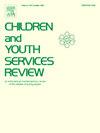What are youth refuge practice models and how effective are they in improving outcomes for youth experiencing homelessness? A systematic narrative review
IF 2.4
2区 社会学
Q1 FAMILY STUDIES
引用次数: 0
Abstract
Youth homelessness is a global problem. Preventing youth homelessness has many individual and societal benefits. Internationally, a key response to youth homelessness is the provision of a standard youth refuge model which includes short-term accommodation staffed by support workers who provide case management and referrals, with other varying health, hygiene and crisis services attached. However, it is unclear what is offered within these settings, and whether youth refuge improves any outcomes for youth experiencing homelessness. Homelessness services have also been increasingly encouraged to embed trauma-informed or psychologically informed practice models into service delivery. Like broader evaluations of the standard model, little is currently known about the extent to which these practice models are being implemented, how they are implemented, and whether they improve outcomes beyond standard models. Therefore, this systematic narrative review aimed to: (1) identify what services youth refuges provide, and which practice models are used; and (2) examine how effective youth refuge practice models are in improving health, behavioural, psychosocial, and/or housing outcomes for youth experiencing homelessness. Database and grey literature searches identified ten articles to be included. Seven articles evaluated a standard refuge model, two included strengths-based practice models, and one included an empowerment philosophy. No practice model offered evidence of its efficacy above what was offered by the standard refuge model, and limited detail about implementation of any model was found. Two cohorts emerged within refuge: (1) a younger cohort who could reconcile with family with therapeutic intervention; and (2) an older cohort who needed other options. Generally, results demonstrated short- to medium-term improvements in all health, wellbeing, and housing outcomes, with most gains reported in vocational status and improved family relations. Housing stability was a key contributing factor for outcome achievement. Most studies were of low methodological quality hence more rigorous, standardised, mixed-methods research is needed before conclusions about the efficacy of youth refuge and any practice models can be made.
青年避难所的实践模式是什么?它们在改善无家可归青年的结果方面有多有效?系统的叙述性回顾
青年无家可归是一个全球性问题。防止青少年无家可归对个人和社会都有许多好处。在国际上,解决青年无家可归问题的一个关键办法是提供标准的青年避难所模式,其中包括短期住宿,配备提供个案管理和转诊的支助工作人员,并附带其他不同的保健、卫生和危机服务。然而,目前尚不清楚在这些环境中提供了什么,以及青年避难所是否改善了无家可归的青年的任何结果。无家可归者服务也日益受到鼓励,在提供服务的过程中加入了解创伤或了解心理的实践模式。就像对标准模型进行更广泛的评估一样,目前对这些实践模型被实现的程度、它们是如何被实现的,以及它们是否改善了标准模型之外的结果知之甚少。因此,本系统的叙述性回顾旨在:(1)确定青年避难所提供哪些服务,以及使用哪些实践模式;(2)研究青年庇护实践模式在改善无家可归青年的健康、行为、心理社会和/或住房结果方面的有效性。数据库和灰色文献检索确定了10篇文章纳入。七篇文章评估了一个标准的避难模型,两篇包括基于优势的实践模型,一篇包括赋权哲学。没有任何实践模式能提供比标准避难模式更有效的证据,也没有发现任何模式实施的细节。避难区出现了两个队列:(1)通过治疗干预能够与家庭和解的年轻队列;(2)需要其他选择的老年群体。总体而言,结果表明,在所有健康、福利和住房方面都有中短期的改善,其中职业地位和家庭关系的改善最为显著。住房稳定是取得成果的一个关键因素。大多数研究的方法学质量较低,因此需要更严格、标准化、混合方法的研究,才能得出关于青年庇护的功效和任何实践模型的结论。
本文章由计算机程序翻译,如有差异,请以英文原文为准。
求助全文
约1分钟内获得全文
求助全文
来源期刊

Children and Youth Services Review
Multiple-
CiteScore
6.30
自引率
6.10%
发文量
303
期刊介绍:
Children and Youth Services Review is an interdisciplinary forum for critical scholarship regarding service programs for children and youth. The journal will publish full-length articles, current research and policy notes, and book reviews.
 求助内容:
求助内容: 应助结果提醒方式:
应助结果提醒方式:


